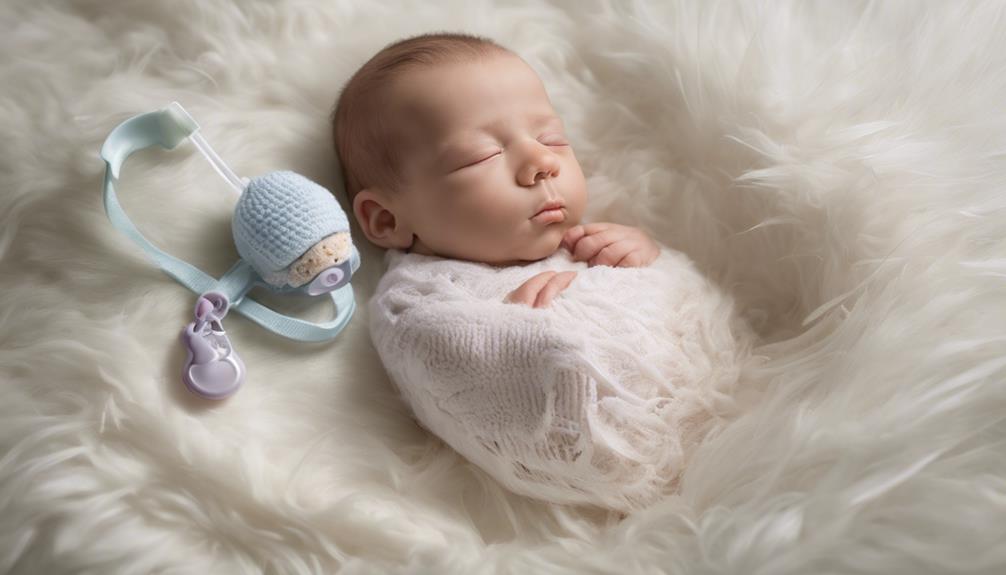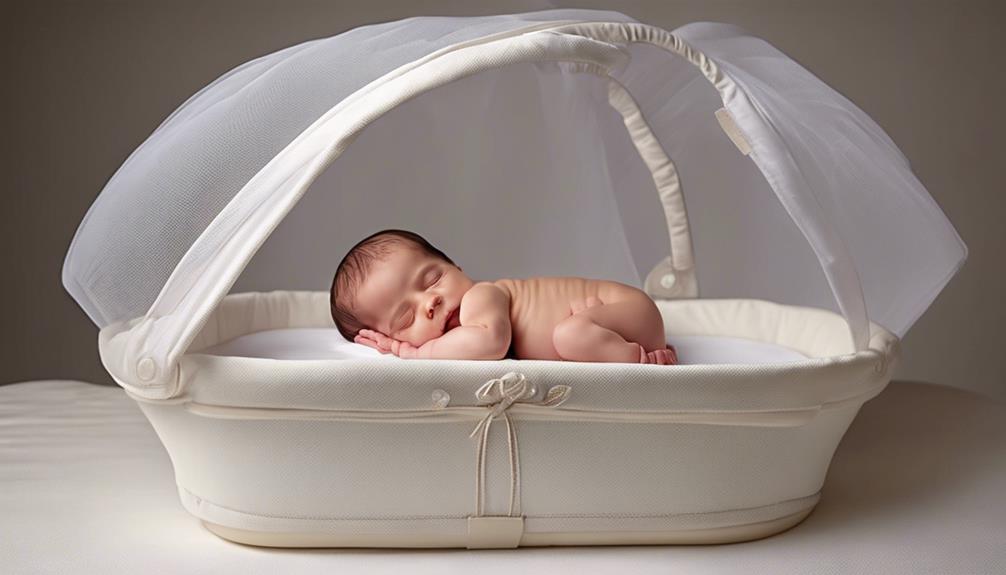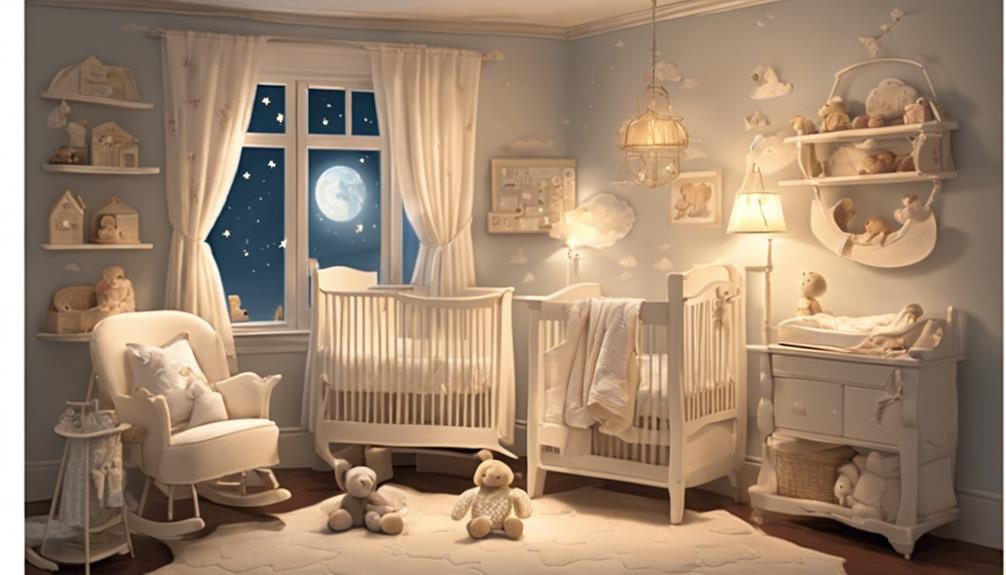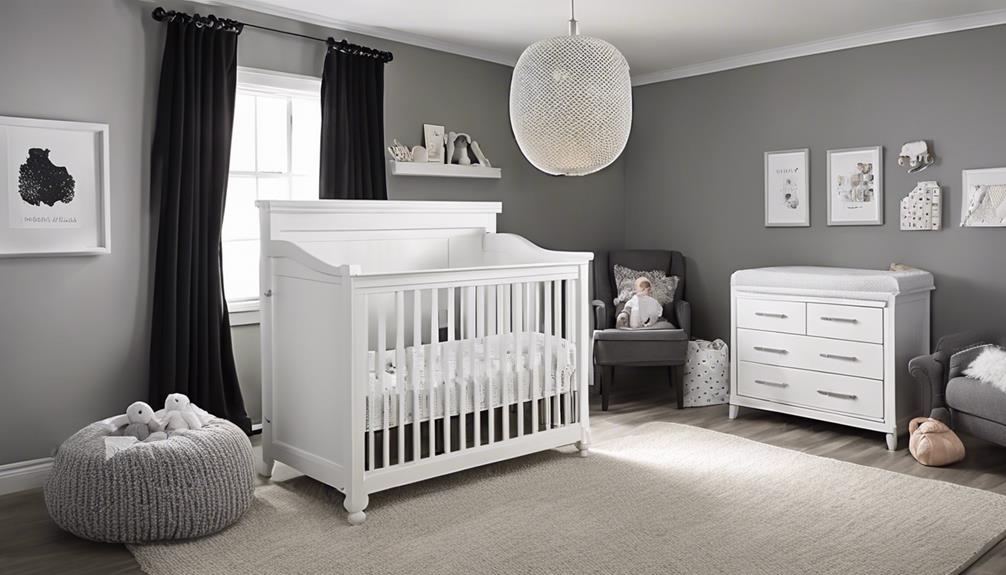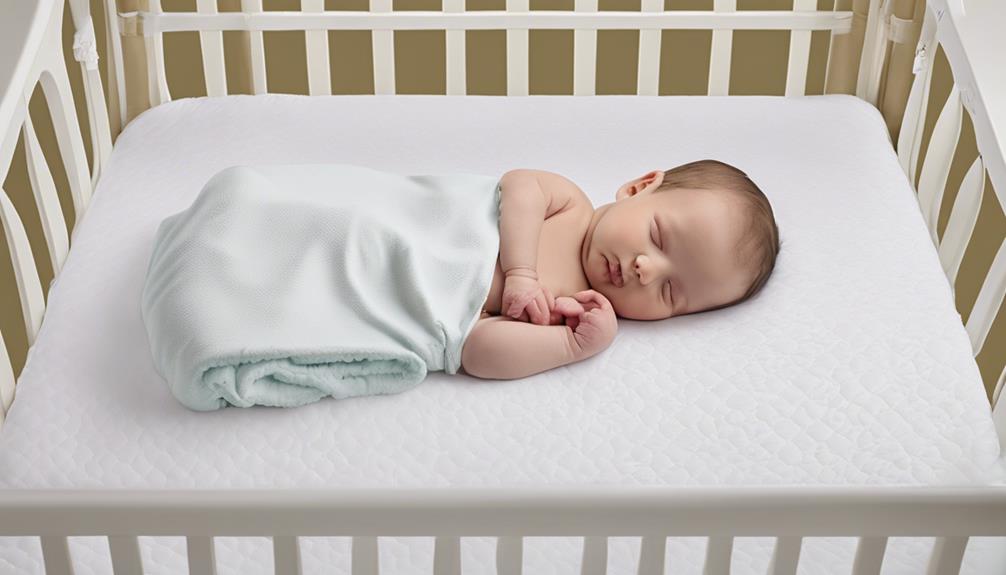In our investigation of newborn sleep patterns, we discuss a critical but often disregarded factor: pacifier safety.
The use of pacifiers can offer comfort and aid in soothing infants, but it's important to navigate this terrain carefully.
From the right pacifier selection to strategic timing, there are key considerations that can have a major impact on your baby's well-being.
As we uncover the nuances of pacifier safety tips, we'll shed light on practices that can make a meaningful difference in your little one's sleep routine.
Key Takeaways
- Introduce pacifiers around 1 month old for safe sleep practices.
- Select one-piece silicone pacifiers to prevent choking hazards.
- Monitor pacifier condition regularly to avoid risks like choking.
- Wean off pacifiers between ages 2-4 to prevent dental issues.
When to Introduce Pacifiers to Newborns
When we introduce pacifiers to newborns, it can greatly impact their comfort and soothing experience. The American Academy of Pediatrics (AAP) suggests offering pacifiers to babies around 1 month old. Following safe sleep guidelines, the AAP recommends waiting until breastfeeding is established to introduce pacifiers to reduce the risk of nipple confusion.
Please be aware that premature babies may benefit from pacifier use for comfort and soothing purposes. While specific situations may allow for earlier pacifier introduction, consulting a healthcare provider is advisable.
Research indicates that introducing pacifiers early on may not negatively affect breastfeeding and can actually offer benefits such as pain relief and improved sleep for both the baby and parents. By following the AAP's recommendations and considering individual circumstances, parents can make informed decisions regarding when to introduce pacifiers to their newborns, promoting safe sleep practices and potentially reducing the risk of sudden infant death syndrome (SIDS).
Selecting the Safest Pacifiers

Introducing a pacifier to your newborn is just the beginning; guaranteeing their safety and comfort with the right choice of pacifier is paramount. When selecting the safest pacifiers, consider the following:
- Opt for a one-piece silicone design to prevent choking hazards and guarantee overall safety.
- Check for different sizes such as small, medium, and large to find the perfect fit for your baby's age.
- Keep extra pacifiers on hand to promptly replace any worn-out ones for both hygiene and safety reasons.
- Remember to replace pacifiers when they display signs of wear to avoid potential risks, including choking hazards.
- Guarantee the pacifier is the correct size and shape for your baby to promote comfort and encourage proper usage.
Monitoring Pacifier Use for Safety

Regularly monitoring your baby's pacifier use is important for ensuring their safety and well-being. Inspect the pacifier regularly for any wear and tear, tears, or damage that could pose a risk. Check to make sure that the pacifier remains securely attached to prevent any choking hazards.
It's vital to keep the pacifier clean and hygienic to prevent infections or illnesses. Supervise your baby while they're using a pacifier, especially during sleep and awake times, to address any safety concerns promptly. By staying vigilant and attentive to your baby's pacifier use, you can help create a safer environment for your little one.
Risks Associated With Pacifier Use

To safeguard your baby's well-being, it's important to be aware of the risks associated with prolonged pacifier use. Using a pacifier can bring comfort and aid in sleep, but there are risks that need consideration:
- Middle Ear Infections: Prolonged pacifier use can increase the risk of middle ear infections in babies.
- Dental Problems: Continued pacifier use may lead to dental problems such as misalignment of teeth.
- Breastfeeding Disruption: Dependency on pacifiers can potentially disrupt breastfeeding patterns in newborns.
- Sleep Disturbances: Losing a pacifier at night can result in crying spells, disturbing the baby's sleep.
- Weaning Recommendation: Weaning off pacifiers between ages 2-4 is recommended as risks outweigh benefits with prolonged use.
Being mindful of these risks can help parents make informed decisions regarding pacifier use for their little ones. Balancing the benefits with the potential drawbacks is essential for the overall well-being of your baby.
Safe Practices for Pacifier Sleep Time

For safe pacifier use during sleep, ensuring proper practices is essential to promote your baby's well-being and safety. When incorporating a pacifier into your infant's sleep routine, it's vital to offer it after breastfeeding is established to prevent nipple confusion. Opt for a one-piece silicone pacifier to mitigate choking hazards during sleep, and refrain from attaching it to clothing or items near the baby's sleep area.
It's important not to allow the baby to sleep with the pacifier attached to a stuffed animal for safety reasons. If the baby spits out the pacifier during sleep, avoid forcing it back in. By following these safety tips and creating a safe sleep environment, you can enhance your baby's comfort and security during sleep time while using a pacifier. Prioritizing these practices will support healthy infant sleep patterns and promote a peaceful rest for both you and your little one.
Is It Safe to Use a Pacifier for My Newborn While Ensuring Safe Side Sleeping?
When it comes to newborn safe side sleeping, using a pacifier can actually help reduce the risk of SIDS. The American Academy of Pediatrics recommends offering a pacifier at naptime and bedtime to help protect your baby while they sleep on their back. Just be sure to use a clean, one-piece pacifier.
Conclusion
To conclude, remember that pacifiers can be a helpful tool for soothing newborns, but it's important to prioritize safety at all times.
By following the guidelines outlined in this article, you can make sure that your baby sleeps safely and soundly with their pacifier.
Let's work towards creating a peaceful sleep environment for our little ones, where they can rest comfortably and peacefully.
